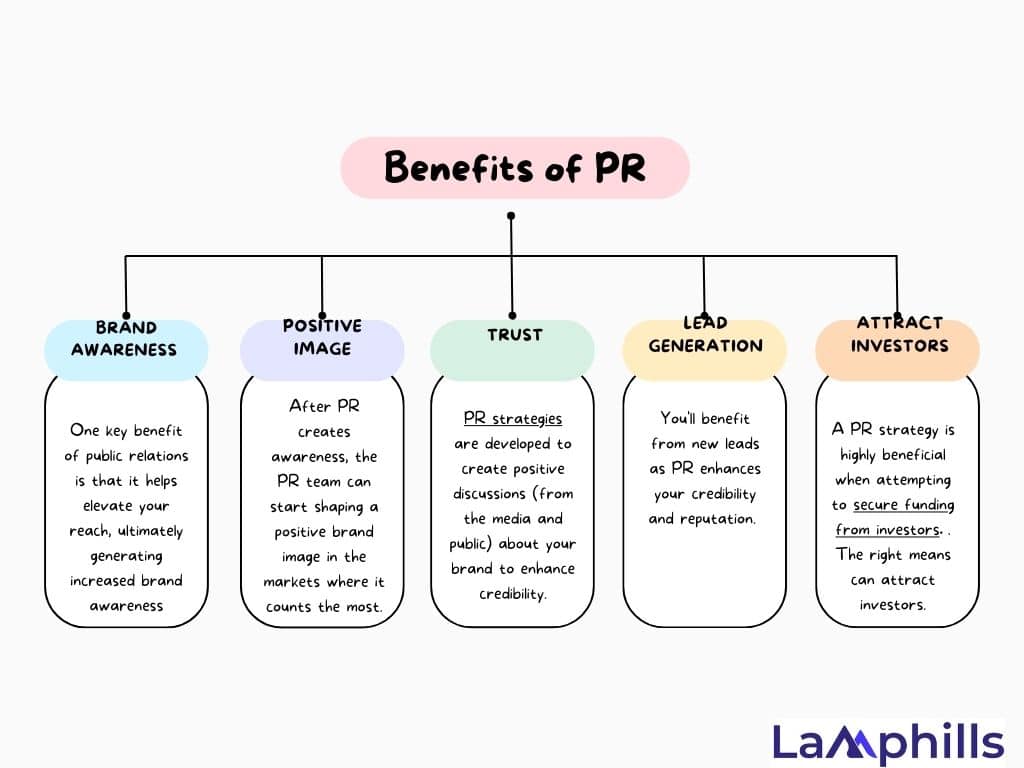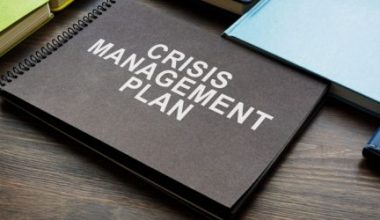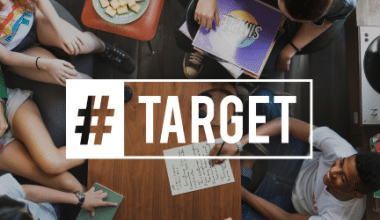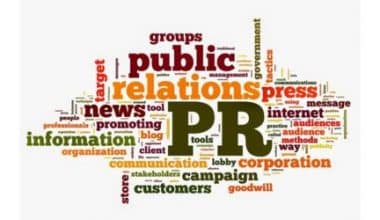Brand reputation in today’s digitally connected world can be created or destroyed within a split second. I experienced this when working with different businesses, including my startup. A few years ago, I was on the verge of failing when my brand became a target of unanticipated notoriety. It was a defining moment that tested the firepower behind my determination and strategies. Rather than letting it strain my business, I saw it as an opportunity to forge closer connections with my customers and to entrench their trust in my brand. Great lessons are here about turning crisis to opportunity, and I am here to impart that knowledge in terms of handling any negativities in PR. Nonetheless, I will also show you how I help brands handle negative PR effectively.
Key Points
- Immediate response is crucial when facing negative PR, showing accountability and commitment to resolving the issue.
- Brands must be prepared to face negative PR, which can come in various forms like critical reviews or scandals.
- Responding effectively to negative PR is key to minimizing its impact on the brand’s reputation.
- Taking responsibility for mistakes, communicating openly with customers, and focusing on positive outcomes are essential strategies for handling negative PR.
- Customer feedback should be valued as a tool for learning and improving the brand’s operations and services.
- Communicate transparently with customers, sharing behind-the-scenes actions and updates to rebuild trust and credibility.
Negative PR
Bad PR—or negative PR—is something that a brand potentially might always have to face. This could come in any form: a critical review, a viral customer complaint, or a scandal involving company executives. You cannot save your brand totally, however clean your business practice is. The only key lies in the way you respond.
Firstly, you should understand what does a PR crisis mean in its most fundamental sense. PR crisis refers to the situation that occurs in an organization and becomes a threat to its brand image.
“For instance, a company that produces children’s toys might face a PR crisis if their toys are found to contain hazardous elements such as chemicals. This could severely damage the company’s image and lead to a decline in sales. Furthermore, if a company engages in unethical practices or mistreats its employees or customers, it could face significant backlash and damage to its reputation.”
I remember when someone dissatisfied with our services targeted my online store. The agitated customer’s complaint quickly spread through social media. Every effort we had made to build our brand seemed to unwind. The negative comments were crushing. It was tempting to respond defensively. Instead, I backed off and chose to handle the situation – with transparency and empathy.
Handling Negative PR: Turning Crisis into Opportunity
Here’s a step-by-step account of how I transformed a negative PR into a positive one, and the strategies I recommend to others facing similar challenges.
# 1. Immediate Response: Acknowledgment of the Problem
When the negative PR hits, step one is the call to action.
Nothing someone says is worse than what silence infers—guilt or indifference. I made a lot of effort to make sure the client knew right away that we were aware of his problem and that we regretted his unpleasant experience. It was a way of showing our audience that we were taking the issue seriously and were committed to resolving it.
# 2. Impact Assessment: Grasp the Gravity of the Situation
After then, it’s critical to determine how bad the PR is. I took the time to understand the full scope of the problem and how it impacted the reputation of my brand. This, of course, meant monitoring social media sites, news platforms, and other places where this complaint was published.
#3. Develop a Response Plan: Plan Your Approach
A prepared response strategy is vitally needed.
This is what I did: I communicated with the guys on my team and brainstormed ideas on what we could best do to mitigate the concerns.
We decided to offer a public apology and detail the steps we were going to take to tackle the problem, outlining how this sort of incident would be prevented in the future.
For example, a beauty brand not liked for issuing a controversial ad may apologize officially, withdraw the ad, and run a campaign for general diversity and inclusion.
#4. Communicate Transparently: Be open and candid
Transparency rebuilds trust.
I communicate openly with my customers, updating them regularly on the steps we take to fix the problem. I also share behind-the-scenes actions and the results of our efforts.
# 5. Take Responsibility: Own Your Flaws
Owning up and admitting one’s mistake can significantly diminish the effect of bad PR.
In my case, after admitting my flaws, I also showed a real exemplary commitment to correct our wrongs. This helped in securing the customers’ trust.
# 6. Turn the Narrative: Focus on Positive Outcomes
One of the most effective ways to handle negative PR is to focus attention on positive outcomes. I made the best of the situation by talking about the changes we were implementing, thus creating an opportunity to show our commitment to quality and the customer.
# 7. Make use of Customer Feedback: Learn and Get Better
Negative PR can be invaluable feedback. I took rather dim reviews seriously and worked on improving our products toand services. Engaging and requesting opinions on improvements showed the customer that we value their opinions and are committed to making our brand better.
#8. Monitor the Situation: Keep an Eye on Public Sentiment
Even after addressing the issue, it’s important to continue monitoring public sentiment.
I kept track of conversations around my brand to promptly address any lingering concerns and ensure that the positive changes we made were recognized.
# 9. Rebuild Trust: Consistent Positive Engagement
Rebuilding trust requires unfailing positive engagement.
I tried to engage more with my customers, respond to their inquiries, and remain transparent and open while engaging online. This slowly helped to rebuild the shattered and shaken trust.
#10. Evaluate and Reflect:
“Finally, I evaluated the cause of the bad PR and assessed how it was managed. I examined the circumstances carefully, identified gaps in our operations, and implemented corrective measures to prevent similar issues from occurring in the future.”
This helped me better prepare for anything upcoming.
Negative PR Examples: Lessons from the Industry
When a company experiences negative PR, it means they have a big problem with their public image. However, many famous companies have faced this challenge and managed to turn things around. Here are some well-known examples that even kids might recognize, along with lessons on how they handled their crises.
It is safe to assume that at some point in our lives, we were exposed to PR campaigns which left our jaws dropped. Some because they were so good you could just name them and they’d know who you were referring to. While some were jaw-dropping and should have been… well, they could have been better thought out, to say the least.
Anybody is capable of making a mistake, and it is not something that one should be ashamed of or fear. However, given that one could always find something to learn from the bad examples, I found it more noteworthy that a list of bad PR examples should be included. Well, this is how it is done when promoting a brand, or more accurately, avoiding brand promotion.
#1: Johnson & Johnson Tylenol Crisis
Johnson & Johnson faced a catastrophic PR crisis in the early 1980s when dozens of deaths were linked to cyanide-laced Tylenol capsules. The company responded by swiftly recalling all Tylenol under their “total, complete, recall” strategy.”
Rather than this response being a premeditated action, Johnson and Johnson elected to recall the 31 million bottles of Tylenol and implement a series of safeguards, among other things the order of filling Tylenol with poly seals and tamper-proof packaging.
Their ongoing campaign aimed to convince people that “lives were saved” in the situation, which helped restore trust and affection that typically takes years to achieve.
#2. Pepsi’s Controversial Ad
What happened?
Pepsi released an advertisement that was intended to promote peace and unity but was perceived as disrespectful and trivializing serious societal issues. This sparked a lot of reaction on social media.
How Pepsi responded: Pepsi promptly removed the advertisement and apologized for the mistake. They committed to be more cautious in future advertising campaigns and to listen to public comments.
Lesson Learned: Understanding and appreciating social issues is essential in advertising. Apologizing and making improvements can assist in solving public concerns.
#3. Nike’s Labor Practices Scandal
What Happened?
The information that some Nike factories were characterized by poor working conditions and had even employed child labor placed the company at the center of a massive PR crisis.
Many people were in shock because they loved Nike products.
How Nike Responded:
Thus, Nike improved working conditions and banned child labor in its supply chain, as well as increasing the transparency of sharing information about factories and working conditions with the outside world.
Lesson Learned: When the issue is serious, transparency about your practices and the efforts taken to improve them will regain public trust.
#4. The fictitious Ronaldo and Coca-Cola scandal
What took place?
Cristiano Ronaldo, a striker for Portugal, pulled the Coca-Cola bottles out of the picture during a news conference so they wouldn’t be in it with him.
Is that not a trifle?
Maybe, but at Euro 2020, the event happened in front of twelve foreign media outlets.
Thirty minutes later, analysts saw a 1.6 percent decline in the value of Coca-Cola shares, and the business lost $4 billion in value. False information that the football player was to responsible for everything immediately made its way via the media.
The football player’s involvement with changes in Coca-Cola shares was swiftly refuted as well. Sports fans quickly recalled that Cristiano has never marketed, limited his sugar consumption, and doesn’t drink soda.
Additionally, Mike’s, Coca-Cola’s direct rival, developed a spoof in which a football player takes the water out of the drink, leaving them with lemonade. Obviously, crisis reputation management is not necessary for such actions.
Social media news feeds were where most people found memories of Cristiano. Additionally, users were informed of the dangers of consuming too much soda.
#5. “Nike’s Bold Bet on Jordan” : The sneaker game changer!
In 1984, Nike did something crazy!
They paid a $410,000 fine just to let Michael Jordan wear black sneakers on court.
Back then, the NBA had a strict rule saying that if a player wears a pair of basketball shoes, “they MUST be 51% white.”
If this rule was broken, you’d have to pay a $5,000 fine per game.
Over an 82-game season, this adds up to $410,000 in penalties.
But Nike being Nike, they sent Jordan onto the court wearing a pair of black and red sneakers – which INSTANTLY stood out, since everyone else’s feet were white.
These shoes were the first edition of what we know today as the Air Jordan 1s.
So when people started talking about how “the NBA fined a guy for wearing some insanely good-looking shoes,” Nike knew that their marketing masterclass was paying off.
All this drama and controversy made Jordans the talk of the town for a week or so, and it catapulted Nike’s sales to crazy heights.
By the end of the season, Mike Jordan became the NBA Rookie of the Year.
And Nike sold over $126 MILLION of Jordan 1s.
Cut to today, and Jordan 1s are still the first shoe you think of when you hear the word “Nike.”
Last year, the entire Jordan brand did over $6.6 billion in sales, and that handsome growth has earned MJ over $1.5 billion in lifetime royalties.
#6. Domino’s Pizza Social Media Crisis
In 2009, Domino’s Pizza faced a social media crisis wherein one of their employees uploaded a video online showing their staff tampering with food.
The company immediately went public, assuring the issue head-on. It embraced a whole redemption process of its mess with a complete turnaround on food safety protocols and an assurance campaign to prove they lived quality.
This example of a very transparent and proactive “how-to” went a long way toward helping Domino’s repair the damage, regain trust, and reassert even more about the brand.
#7. Starbucks Racial Bias Incident
Starbucks had a lousy PR in 2018 when Philadelphia police arrested two African American men at their store for not buying anything.
The incident, which did spark national outrage with allegations of racial bias, led to Starbucks closing all its stores to conduct racial bias training among employees and restructuring guidelines, ensuring such an incident never occurred in the future.
The proactive response helped the company assure people of its commitment to inclusivity and regain public trust.
#8. United Airlines Passenger Incident
What Happened?
United Airlines faced a huge PR crisis when a video went viral of a passenger being forcibly removed from an overbooked flight. The incident caused public outrage and damaged the airline’s reputation.
How United Airlines Responded
United Airlines apologized and changed its policies to prevent similar situations. They also offered compensation to the affected passengers and reviewed their customer service practices.
Lesson Learned: Handling customer service issues with care and respect can help repair damage and improve public perception.
What Is an Example of Negative Publicity?
United Airlines is a prime example of bad brand PR when a passenger was dragged off an overbooked flight without permission. The story went viral and hurt the airline’s reputation.
Is There Such a Thing as Bad PR?
The often used expression “any publicity is good publicity,” as well as its variants “there’s no such thing as bad publicity,” “bad press is good press,” and “there’s no such thing as bad press,” are all simply incorrect. These myths are frequently derived from the practice of PR stunts, also known as publicity stunts.
Related: All Publicity is Good Publicity: True/False (Detailed Analysis)
What Are the Benefits of Negative PR?

Brands can use negative publicity to build buzz and awareness. A negative news report about a company can frequently garner more attention than a positive one. This is just one example of how businesses have successfully used negative publicity as a marketing tactic.
What Are the Sources of Negative PR?
Negative publicity can take many forms, including “fake news,” personnel blunders, unfavorable reviews, the disclosure of business “dirt,” and the dissemination of inaccurate information. All of these types of unfavorable publicity can be destructive and must be dealt with appropriately.
Conclusion: Turning a Crisis into an Opportunity
Managing negative PR is a challenge faced by virtually every business. The art of handling such situations rests in regarding them as opportunities for growth and improvement.
When businesses respond quickly, are forthcoming with details, accept responsibility for the issue, and learn from the experience, crises can be used to forge better relationships with their clients and build confidence in their brand.
In my own experience, dealing with negative PR proactively and positively resolved not only the problem at hand but also built the basis of my business to be yet firmer.
By concentrating on the concept of long-term trust and credibility, companies can navigate through the mastering of this digital era without any PR issues. Remember that crises are opportunities not just to resolve your problems but to come out of them, proving your excellence and building lasting trust with your audience.
Did You Find This Article Engaging? Then Read
- Bad PR Examples & Lessons You Should Learn (Expert Tips)
- Branding Sentiment Analysis: Everything You Should Know
- Top 12 Digital PR Agencies Worldwide + Free Strategies
- Crafting the Perfect Journalism Resume: Tips for Standing Out in a Competitive Field






